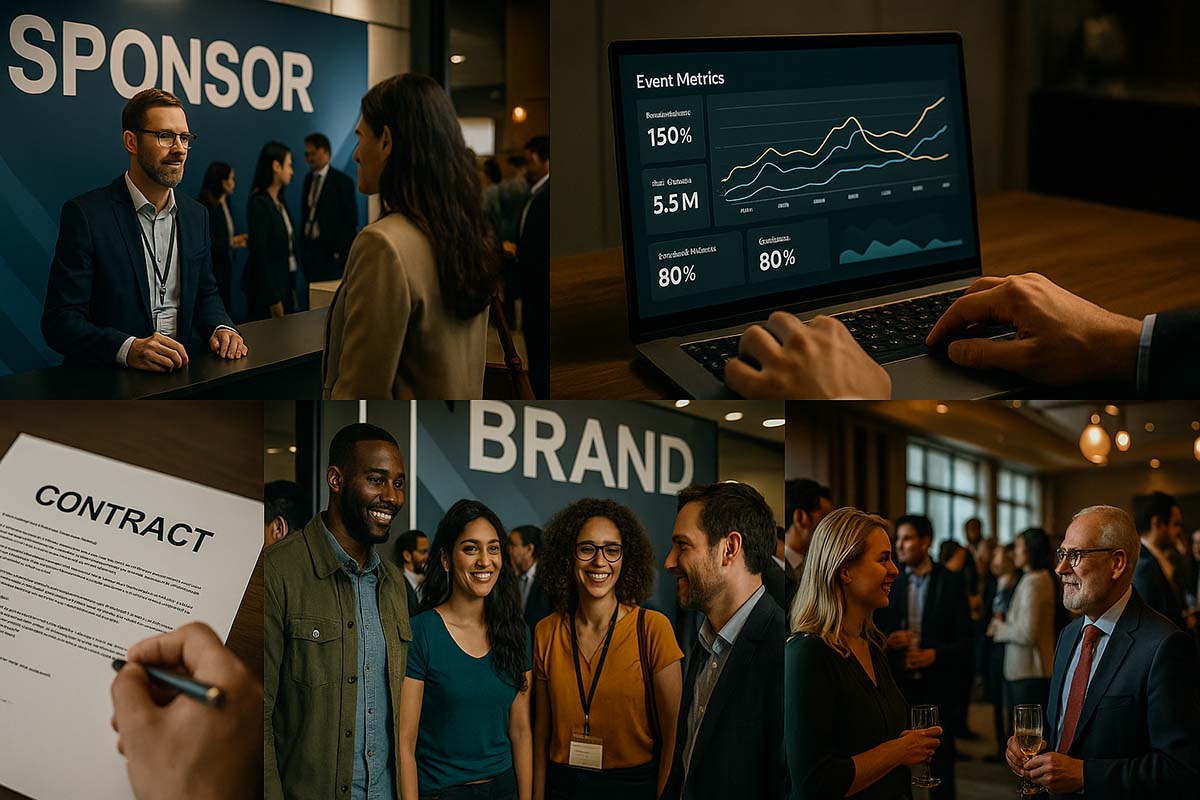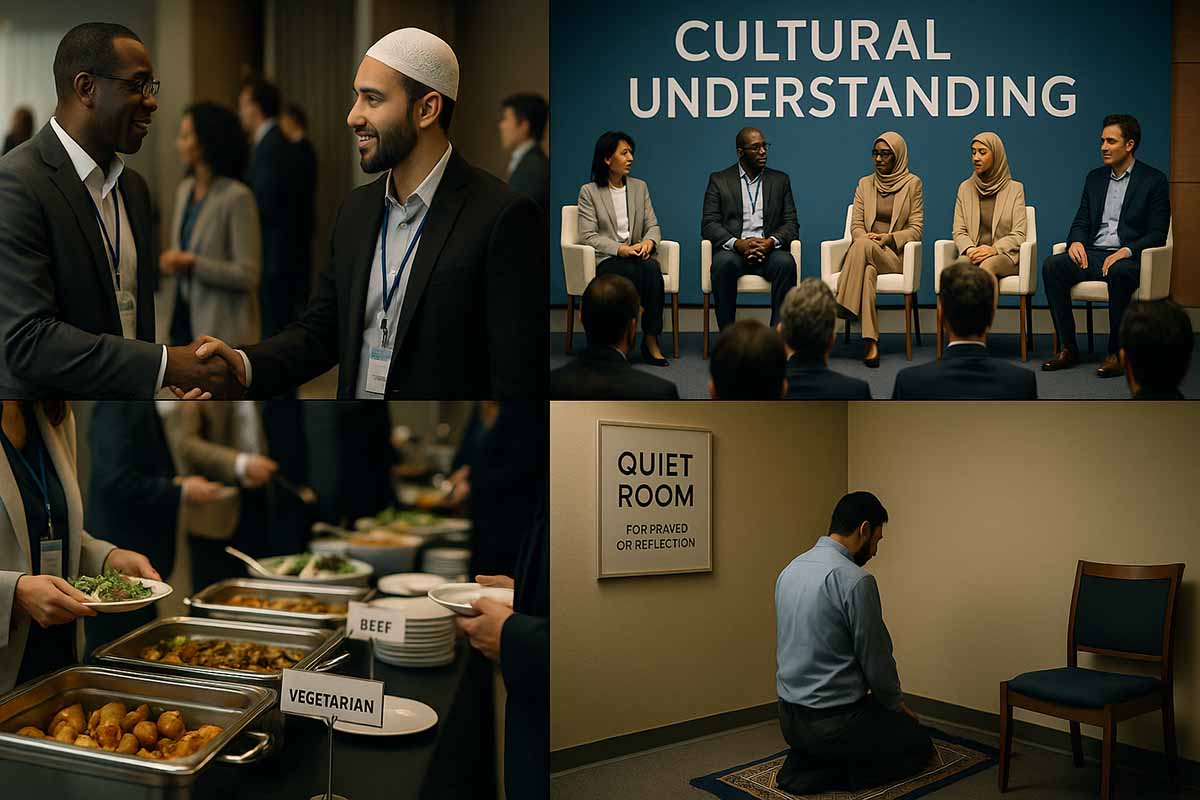A Guide to Securing Sponsorships for Large-Scale Events
Guide to Securing Sponsorships for Large-Scale Events
Large-scale events go beyond the stage, lighting, and program. Often, success depends on securing partners willing to invest in exchange for clear value. For organizers and brands worldwide, strong sponsorships create broader reach and smoother production.
Whether you are organizing a tech conference in Singapore, a music festival in Berlin, or a sustainability summit in São Paulo, sponsors share the same question: What do we gain in return for our investment? When the answer is clear and backed by data, approval comes faster.
Quick Summary
- Focus your offer on ROI, audience fit, and brand reputation security.
- Prepare an asset inventory before proposing: audience data, rights, and channels.
- Price based on actual value, not just costs.
- Measure and report results simply, accurately, and promptly.
Why Strong Sponsorship Matters
Expenses for venue, production, security, and talent are significant. Ticket sales and exhibitor fees often fall short, making sponsors critical partners. In the global market, brands look for spaces where their target audience is present. If you can show audience size, quality, and value before, during, and after the event, the partnership becomes a logical choice.
Operationally, sponsors can elevate attendee experiences. A telecom company might provide high-speed Wi-Fi along with a co-branded portal. A fintech partner could enable cashless payments on-site. Every activity should have clear objectives and measurable outcomes.
What Sponsors Seek Across Regions
While markets vary, core criteria remain consistent.
First, audience fit. Who will attend, and what decision-making power do they have?
Second, quality of visibility before, during, and after the event.
Third, measurable outcomes that help track impact on leads, sales pipeline, or brand health.
Brand safety is equally critical. Establish clear policies for content and booth conduct, including influencer activities. If certain countries have restrictions, address data protection and advertising compliance. This demonstrates that your team meets global standards and values a positive reputation.
Building a Sponsorship Asset Inventory
Before setting prices, list what you can offer.
- Audience data and access: size, profile, countries, interests, and touchpoints such as email lists and app users.
- On-site and online visibility: banner placements, LED screens, stage mentions, livestream lower thirds, and branded content in the agenda or newsletter.
- Naming rights: presenting partner, track naming, lounge naming, or program segment naming.
Create a matrix for each asset, showing reach, estimated impressions, cost to deliver, and any limits. This helps prevent overpromising and provides a basis for pricing. If you have your own media like a podcast or video series, include it as an extension for continued exposure beyond event week.
Designing a Clear Offer
With your inventory complete, prepare an offer that even a busy procurement manager can grasp quickly. Use a one-page snapshot with the event overview, audience highlights, key packages, and contact details. Keep paragraphs short, avoid heavy jargon, and use clear visual elements.
Offer tiered packages with distinct levels such as Strategic Partner, Major Partner, and Supporter. For each level, show the core assets, optional add-ons, and expected outcomes. Indicate any partner limits to maintain exclusivity and avoid conflicts of interest.
Pricing Based on Real Value
Do not set prices solely on expenses. Align them with the sponsor’s benefits. For instance, if you have 5,000 senior attendees and the typical conversion rate is two percent, estimate potential leads and link them to the average deal size. This justifies the price logically.
Provide flexible options. Offer a bonus email blast if registrations exceed targets, or a social content boost for high engagement. Show your commitment to achieving goals, and present a clear reporting plan.
Include historical benchmarks from your own events or public case studies. Give ranges rather than fixed targets to set realistic expectations. For new events, use conservative estimates and offer an upside clause if numbers exceed projections. Most procurement teams worldwide appreciate this approach.
Prospecting and Initial Outreach
Create a target brand list by category and region, avoiding conflicts with current partners. Use exhibitor lists from similar events, press releases about new products, and job postings for partnership roles. These sources reveal companies with active budgets and clear needs.
For first contact, a concise email with a clear reason is more effective than a lengthy presentation. Example: “We have a clean tech track that aligns with your sustainability program. Here’s a one-page overview and sample assets.” Provide three date options for a 20-minute call, and follow up with new updates like confirmed speakers or registration milestones.
Customizing the Offer for Each Brand
The core offer remains the same, but details adapt to each brand. Sports apparel companies may prefer on-site experiences and community runs, while B2B software brands may value demo lounges and curated meetings. Prepare two or three micro-modules that attach easily to the core package. Approvals come faster when the connection to the sponsor’s campaign is clear.
For example, at a tech summit in Tokyo, a sponsor set up a mentorship booth. The line extended into the main hallway and generated dozens of inbound demo requests within two weeks. This proved that you can deliver tangible results, not just visibility.
Negotiation and Agreement
List deliverables, dates, and responsible parties. Define category exclusivity if needed, and set up content approvals, co-marketing schedules, and creative specifications. Structure payments with a deposit, pre-event milestone, and post-event balance tied to delivery. Avoid vague terms to reduce risks.
Ensure compliance. Some countries regulate alcohol, fintech, or health claims. Outline data protection measures and cross-border transfers. Prepare cancellation and contingency plans. Sponsors gain confidence when there are clear backup strategies.
Activation and Attendee Experience
To make your sponsor’s brand memorable, give attendees a reason to engage. Create interactive zones, workshop tables, and photo areas with clear calls to action. Adapt activities to local culture while staying true to global brand guidelines. In Dubai, a VIP lounge with quick consultations may work well, while in Barcelona, a lively live demo in an open plaza might be ideal.
Plan staff training and the run of show. Ensure cue sheets and escalation paths are ready, and keep a small crisis kit with USB backups, extension cords, and a printed contact list. Smooth operations are often the sponsor’s primary reason for renewing the partnership.
Measuring and Reporting Results
Set metrics before promotion begins. These can include registration targets, qualified meetings, scan counts, or media reach. Use UTM codes, unique QR links, and lead forms with clear consent. Assign someone to monitor data quality during the event.
In your report, show performance against targets, key takeaways, and creative proof like photos and highlight clips. Keep the document concise, with an annex for raw data. Offer a 30-minute review call to discuss next steps.
Building Long-Term Relationships
Future sales are easier when current partnerships are nurtured. Send quarterly updates on community growth and content performance, and suggest co-created projects like research briefs or regional roundtables. If your event is expanding, offer current sponsors first rights of renewal.
Be honest about shortcomings. If an asset was not delivered on time, provide a clear and valuable replacement. Brands value integrity and accountability.
Pre-Proposal Checklist
Before hitting send, confirm that audience data and current registration numbers are complete. Check if the creative and approval timelines are set. Ensure category exclusivity is clear. Verify that assets align with the brand’s objectives. If all these are in place, your proposal is more likely to get a positive response.
Securing sponsors for large-scale events requires clear value, thorough preparation, and honest relationships. By demonstrating real benefits and delivering effectively, brands will return, and your projects will grow across different regions of the world.


